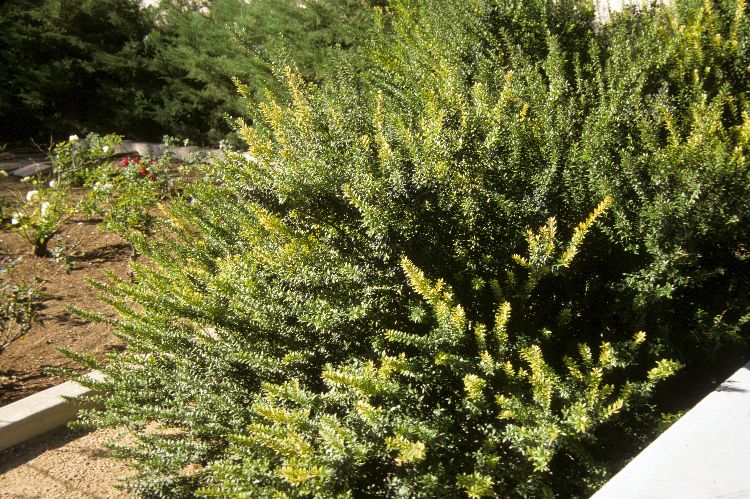
Myrtus communis
True Myrtle
Look for 'Compacta', Dwarf Myrtle, for a smaller scale planting. It grows to 4 feet high and as wide. 'Variegata' has bright yellow-green leaves. Canopy coverage: 79 square feet.
[Read More]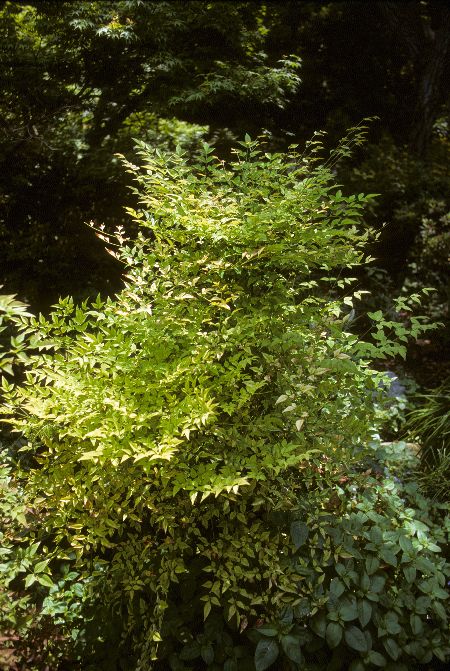
Nandina domestica
Heavenly Bamboo
Heavenly Bamboo looks much like bamboo but is unrelated. Avoid planting in afternoon sun—better with north or eastern exposure. Leaves often turn shades of red and orange in fall following exposure to sun and cold. Canopy coverage: 13 square feet.
[Read More]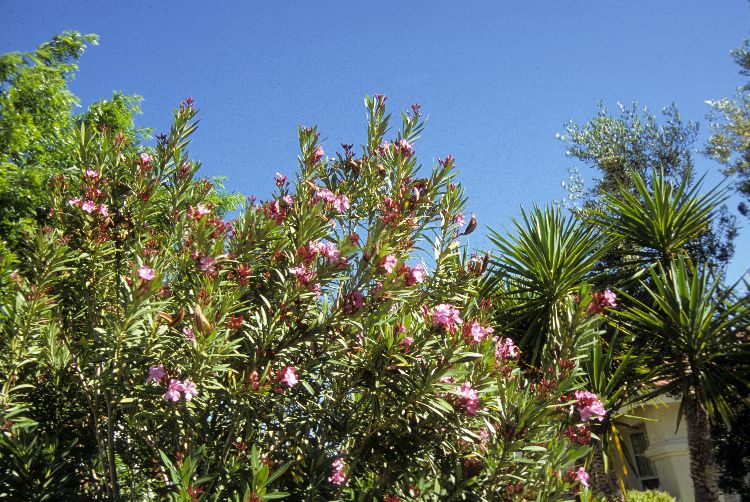
Nerium oleander
Oleander
One of the most versatile shrubs, a workhorse in the landscape, accepting of tough conditions. Be aware that all plant parts are poisonous. 'Petite Pink' is a dwarf selection, to just 4 feet high. It is slightly less hardy to cold. Canopy coverage: 79 square feet.
[Read More]Olea europaea 'Little Ollie'
Little Ollie Olive
This is a dwarf version of Olea europaea. (See Trees category.) It does not produce fruit. Canopy coverage: 28 square feet.
[Read More]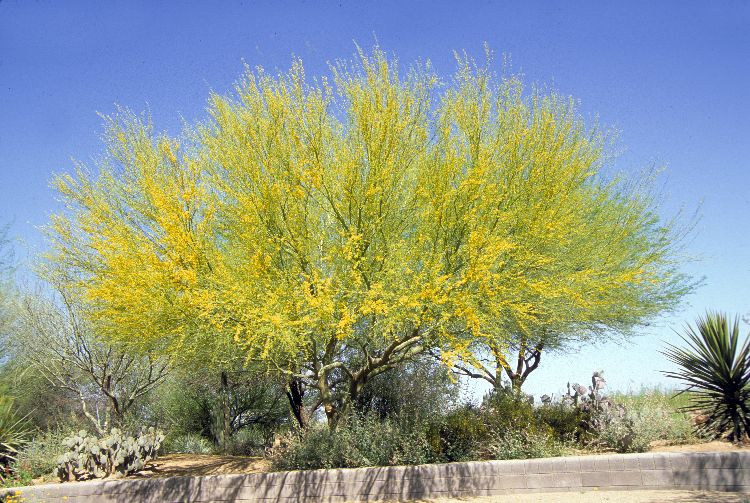
Parkinsonia microphylla
Foothills Palo Verde
Foothills Palo Verde is naturally more shrublike in form but it can be pruned to become a small tree with character. Canopy coverage: 177 square feet.
[Read More]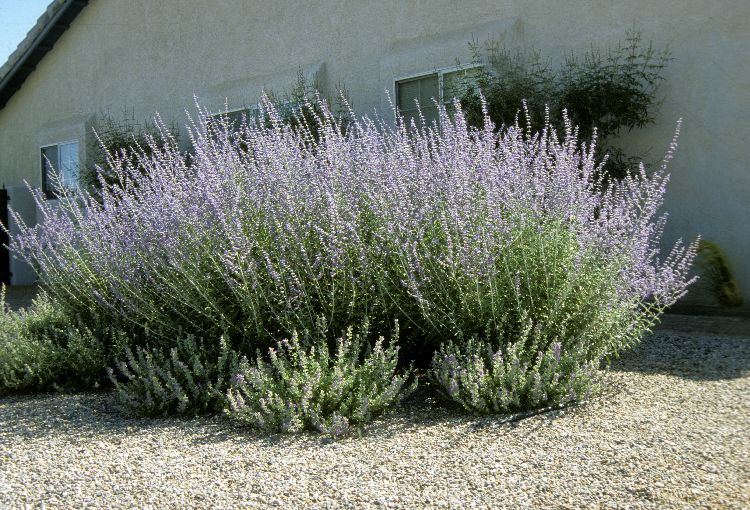
Perovskia atriplicifolia
Russian Sage
Russian Sage is a large, upright plant that can be used much like a deciduous shrub or large flowering perennial. A long bloomer that is easy to grow. Canopy coverage: 13 square feet.
[Read More]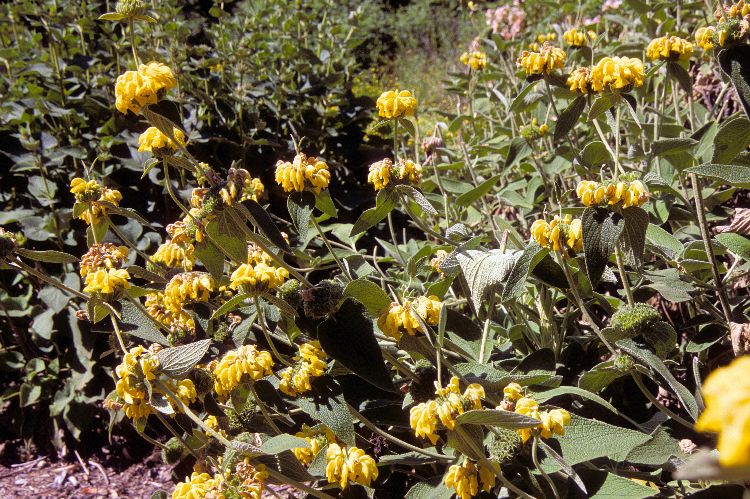
Phlomis fruticosa
Jerusalem Sage
Jerusalem Sage is shrublike in form, and blends well with other dry-climate plants. Accepts full sun in some regions but overall better with afternoon shade, particularly in hot summer climates. Foliage is aromatic when brushed. Flowers are borne in whorls of yellow along upper stems. Canopy coverage: 7 square feet.
[Read More]Phlomis russeliana
Sticky Jerusalem Sage
Sticky Jerusalem Sage grows as a clumping low shrub or groundcover with large, heart-shaped leaves. Flowers are borne on tall stems like other Phlomis species. Spreads by underground runners. Canopy coverage: 3 square feet.
[Read More]Photinia serratifolia
Chinese Photinia
A versatile tree or perhaps more commonly grown as a large, spreading shrub. Prune to maintain desired size and form. Best with some protection from the sun in hot summer regions. New growth is light green to coppery bronze, then turns dark to medium green. Showy red berries follow spring flowers and adorn the plant for a long time. Susceptible to mildew along the coast. Canopy coverage (tree form): 707 square feet.
[Read More]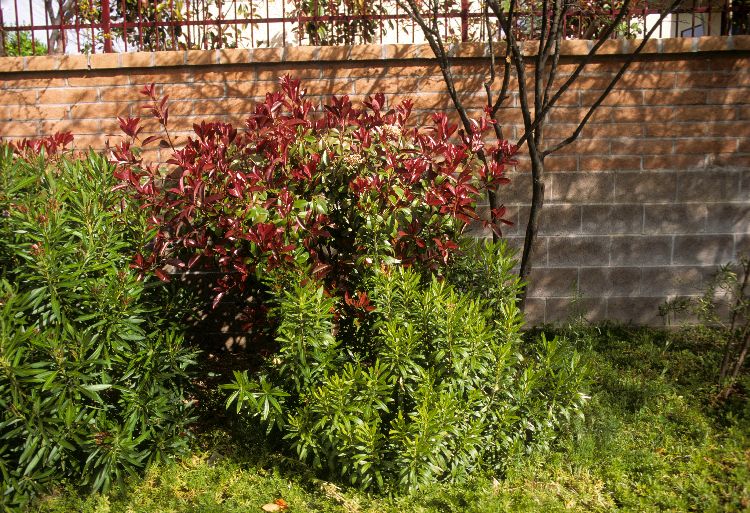
Photinia x fraseri
Redtip Photinia
Redtip Photinia makes an excellent screen or background planting. New growth in early spring is bright coppery red, which gradually turns medium green. Canopy coverage: 20 square feet.
[Read More]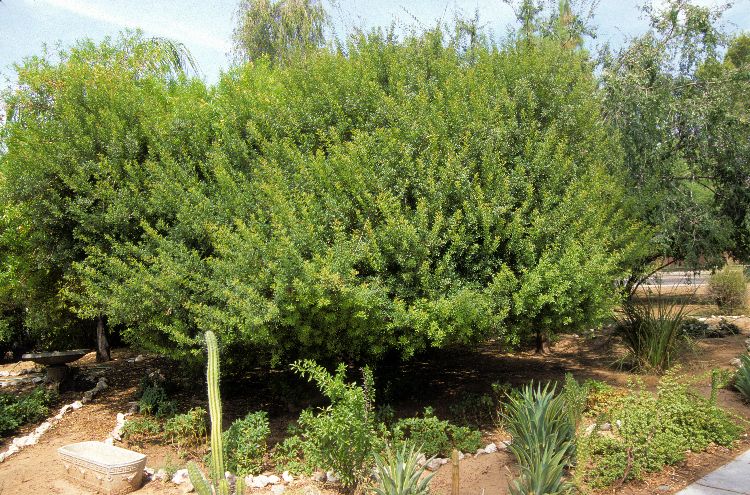
Pistacia lentiscus
Mastic Tree
Well adapted as a large shrub or screen with its wide spreading form, or train into a small tree. Canopy coverage: 314 square feet.
[Read More]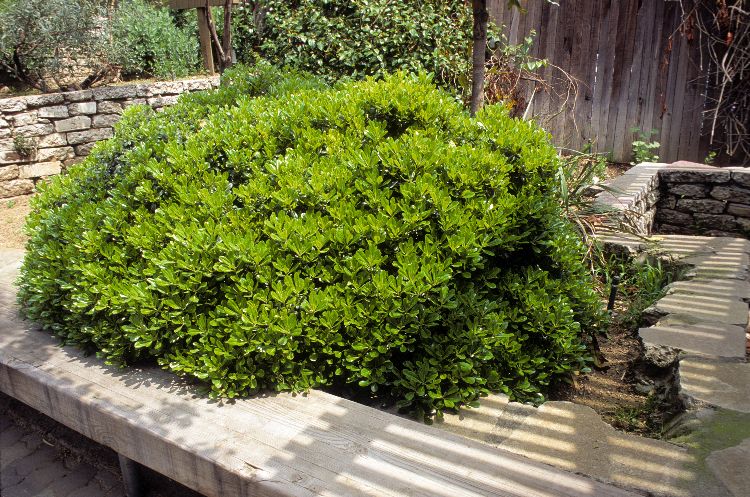
Pittosporum tobira 'Wheeler's Dwarf'
Wheeler's Dwarf
Pittosporum tobira, Mock Orange, grows as a large shrub to several feet high. 'Wheeler's Dwarf' is much smaller—to just 2 feet high. It prefers filtered shade such as beneath a canopy tree. Dense growth and small stature make it a good choice as a foreground plant. Canopy coverage: 7 square feet.
[Read More]Platycladus orientalis 'Aureus'
Golden Arborvitae
Golden Arborvitae is an evergreen shrub often seen in older gardens. Plants can become quite large. Dwarf selections to 3 feet high are available. Canopy coverage: 79 square feet.
[Read More]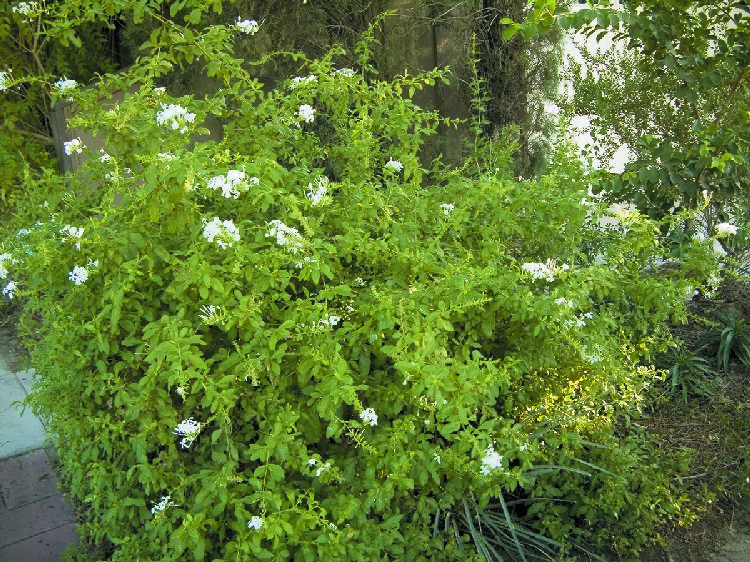
Plumbago scandens
White Desert Plumbago
White Desert Plumbago is a sprawling shrub or groundcover that prefers some afternoon shade in hot-summer regions. Flowers are white and profuse in summer, lending a cooling effect. Canopy coverage: 13 square feet. Photo courtesy Mountain States Wholesale Nursery.
[Read More]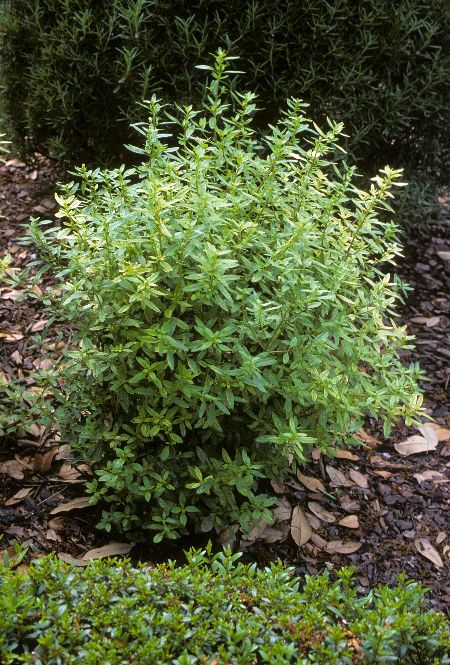
Poliomintha maderensis
Lavender Spice
Leaves offer seasoning taste and fragrance of oregano. Flowers change colors with time, going from lavender, to purple to white. Canopy coverage: 7 square feet.
[Read More]Prosopis pubescens
Screwbean Mesquite
Screwbean Mesquite can be grown as a shrub or trained into a small tree. Thorny—prune with caution. Very low water use but improved appearance with additional water. Canopy coverage: 707 square feet.
[Read More]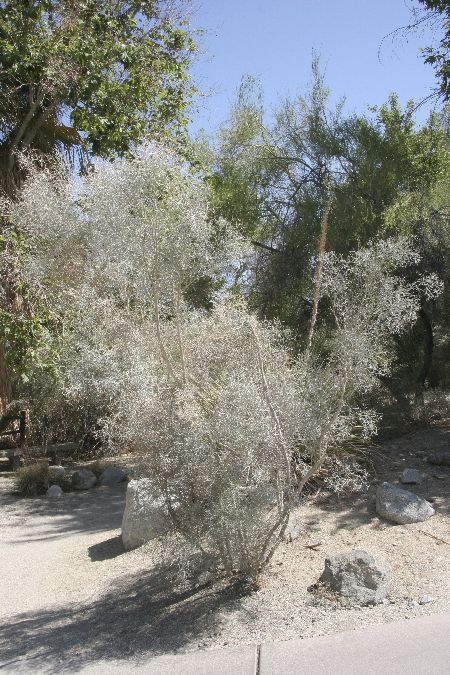
Psorothamnus spinosus
Desert Smoke Tree
The natural habitat of Desert Smoke Tree is along desert washes. Accepts low water, but occasional deep irrigations will improve plant appearance. May be hard to find plants but worth the search. Canopy coverage: 177 square feet.
[Read More]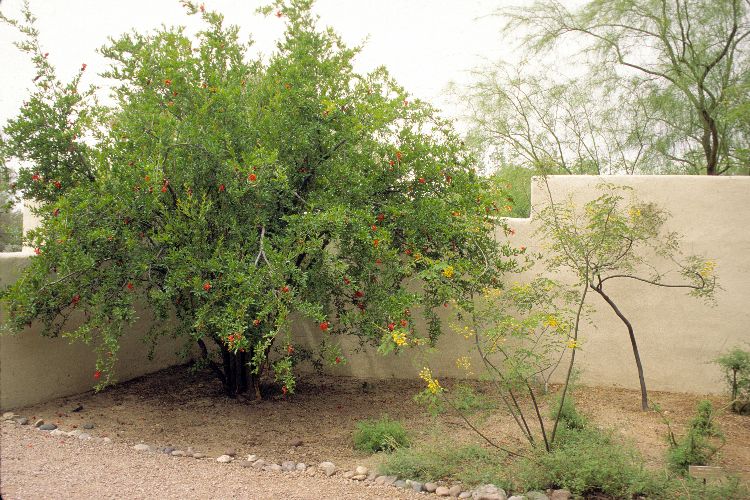
Punica granatum
Pomegranate
Pomegranate can be grown as a shrub or small tree. Edible fruit is a primary attraction. If fruit is the goal provide more water during summer. Canopy coverage: 113 square feet.
[Read More]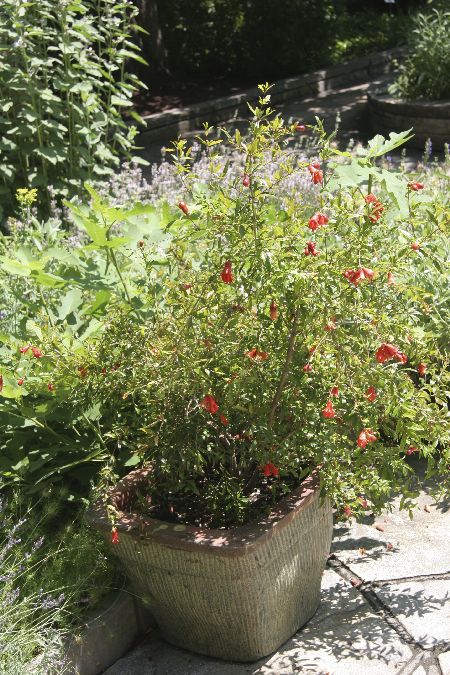
Punica granatum 'Nana'
Dwarf Pomegranate
Nana' is a dwarf selection ideal for small spaces, growing to 3 feet high and as wide. Unlike the species, the fruit is not edible. Bright red to orange flowers add color in spring. Canopy coverage: 7 square feet.
[Read More]Pyracantha angustifolia
Narrowleaf Firethorn
A large shrub with thorny branches, Narrowleaf Firethorn works well as a screen or barrier plant. White flowers in late spring are followed by clusters of orange berries. They remain on the plant into winter. 'Yukon Belle' is a superior selection. Canopy coverage: 50 square feet.
[Read More]Pyracantha crenatoserrata
Pyracantha
Pyracantha is a triple-threat shrub, with attractive evergreen leaves, clusters of white spring flowers, and long-lasting orange-red berries in fall and winter. Be aware of its large thorns, which can serve nicely as a security barrier; avoid locating near traffic areas. Canopy coverage: 79 square feet.
[Read More]